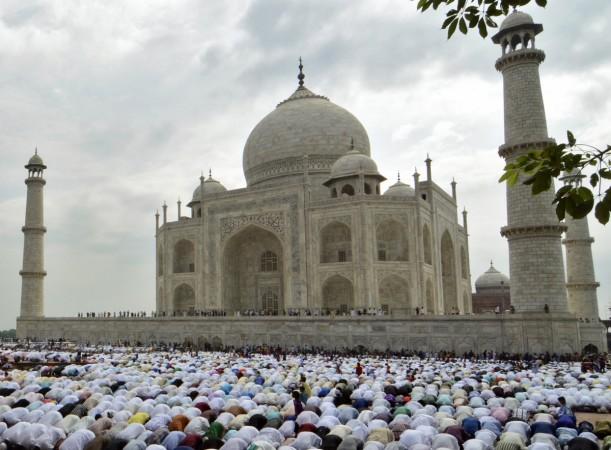
The Archaeological Survey of India, the organisation in-charge of protecting ancient monuments in India, surprisingly does not have any record of the demarcated area around the Taj Mahal in Agra in which new construction is strictly prohibited.
A citizen had filed an RTI application before the Central Information Commission (CIC) seeking information about the demarcated area around the Taj Mahal where construction is not allowed. The fact that the ASI did not have any record of the demarcated area came up during the hearing of the RTI application.
The RTI applicant sought information about the demarcation of the 500-metre long boundary around the Taj Mahal, which was built by Mughal emperor Shah Jahan for his wife Mumtaz Mahal, where any kind of construction is prohibited. The ASI's Central Public Information Officer (CPIO) said that the "record" was not available with them, the Press trust of India reported.
Information Commissioner Sridhar Acharyulu, upset by the ASI's response, said that it is the Centre's duty to monitor construction activities around the protected marble wonder of national importance. Taj Mahal attracts over three million tourists every year and is also a UNESCO World Heritage Site.
The CIC has issued a showcause notice to the CPIO asking for an explanation for denying the information and has also ordered the ASI to appoint an official who can keep records of complaints on the harassment of residents in the protective zone, PTI reported.
According to the RTI Act, the ASI and the state government have a responsibility to inform the citizens about the demarcated area, the houses, roads and other things included in it, restrictions in the area, the process to ask for permission for maintenance work around the monument, Acharyulu was quoted by the news agency as saying.
"The ASI did not have make any such voluntary disclosure of this useful information which would have protected the monument. And when the appellant wanted that under the RTI Act, the ASI claimed that it did not have that record. If it does not know the demarcated area around the monument, how can it implement ASI Act and protect the monument from violators of restrictions? How can they identify violators of the law and punish," Acharyulu asked.
Acharyulu also asked how the ASI could claim that they don not maintain any such records when the director general is the person who gives permission for maintenance and repair work.
"Appellant brought to the notice of the Commission that because of denial of information about area, demarcation, details of houses...several plots remain empty, houses deteriorated and structures were crumbling and they could not be repaired," he said, adding that the appellant said lack of information was resulting in corruption and affecting daily life.
Acharyulu further added that this was a case of non-compliance of mandatory proactive disclosure under Section 4(1)(b), and denial of information under the RTI Act, PTI reported. He also said that it is the responsibility of the ASI to disclose authentic information following preparation in collaboration with the Agra Development Authority.
Acharyulu said that the Agra Development Authority is mandated to demarcate the restricted area around the monument and inform the local residents about it.
"It is not correct on the part of public authority, the ASI, to deny information on rules, restrictions and areas under which public residing within prohibited zone around Taj Mahal. It is blatant violation of Section 3,6, and 4(1)(b) of the RTI Act," he said.
Acharyulu added that Section 4 stands for transparency of public authorities to help in reducing corruption and minimising the need of RTI applications.
















